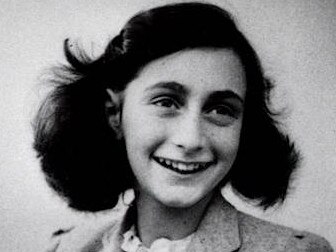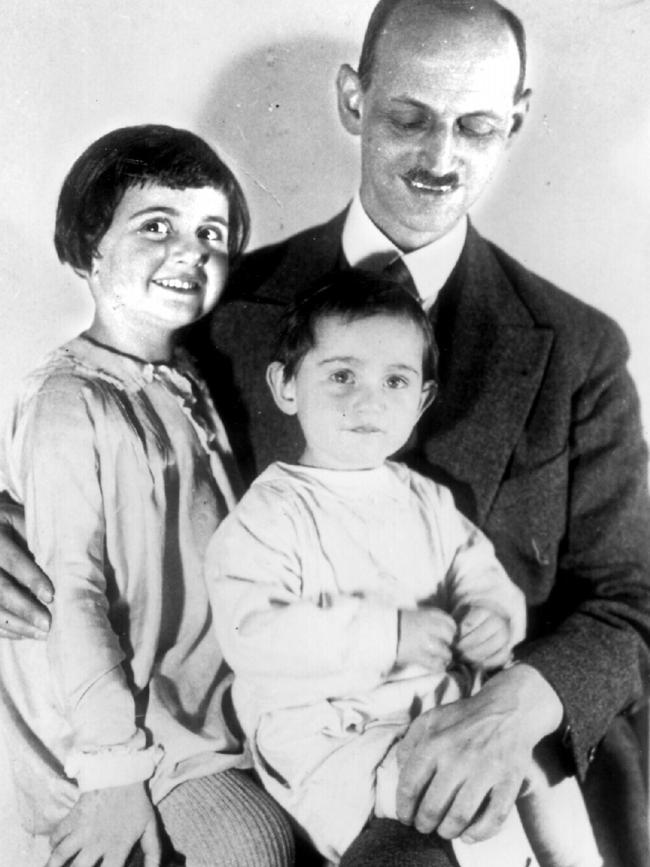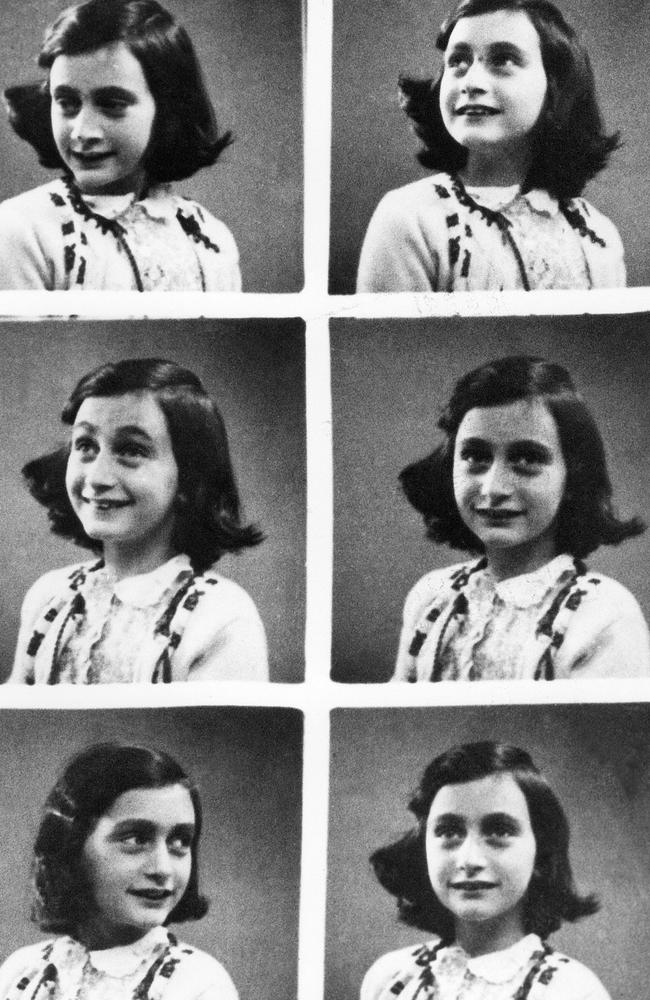Arnold van den Bergh: Secrets of man who allegedly betrayed Anne Frank to the Nazis
The prime suspect in Anne Frank’s betrayal may have been driven by one tragic reason, a new book reveals. READ EXCLUSIVE EXTRACT
World
Don't miss out on the headlines from World. Followed categories will be added to My News.
THE man who allegedly betrayed Anne Frank and her family to the Nazis should not be judged, according to the author of a new book that claims to have finally identified him.
The allegation that Arnold van den Bergh, a Jewish notary in Amsterdam, gave up the teenage diarist and her family came after an investigation by a cold case team comprised of retired FBI detective Vince Pankoke and other experts.
After tireless work using high-tech tools and sophisticated investigative techniques, the team concluded that Arnold van den Bergh was the prime suspect, hinging their theory on an anonymous note received by Anne’s father, Otto Frank.

The note claimed van den Bergh, who died in 1950, had given the Nazis a list of addresses being used as hiding places by Jewish people.
One of those addresses, it is alleged, was the Amsterdam warehouse where the Frank family and others were hiding in a cramped annex concealed by a bookcase.
In her book The Betrayal of Anne Frank: A Cold Case Investigation, Canadian writer Rosemary Sullivan has documented the epic scale of the cold case team’s lengthy investigation.

“Vince Pankoke is a very professional investigator, I was very impressed by his strategies,” she said, speaking from her home in Toronto.
“He came up with ways of organising 750,000 files of information. When it came down to 12 suspects, he looked at them in terms of knowledge, motive and opportunity.
“He was the first one to take very seriously the existence of this anonymous note.”
Sullivan described the tragedy of Anne Frank — who died in a concentration camp at the age of 15 — as “mind-boggling”.

Strongly interested in “how power manipulates people”, Sullivan said van den Bergh should not be judged for his actions and likely had no alternative if he wanted to save his own family from the Nazis.
“(van den Bergh) is not the bad guy. You knew by August 1944 that your family was going to be sent to an extermination camp — that is inconceivable.
“Anybody who wants to judge van den Bergh, well, you have to be in his shoes before you would react. I think he was cornered.”

Sullivan said it was impossible not to feel moved when visiting the Anne Frank House, now a museum dedicated to the teenager who has inspired millions.
“The idea that in that tiny space, eight people lived for two years and one month … the stamina that took was shocking,” she said.
The author said the murder of Anne Frank was incomprehensible and had no logic “except for the growth of vicious conspiracy and racial hatred.
“There was a phrase where Anne said to her diary that she wanted to write a mystery where you wouldn’t know the end till the end.
“And that just shattered me. The idea that we know what’s happening but Anne Frank doesn’t.”
READ AN EXCLUSIVE EXTRACT FROM THE BETRAYAL OF ANNE FRANK: A COLD CASE INVESTIGATION
When veteran FBI agent Vince Pankoke sat down with the scientists from Xomnia, they suggested that because the team was working on such an old case with missing data, the puzzle of the August 4, 1944, arrest (of Anne Frank and her family) would almost certainly never be complete. Yet at some point the program’s algorithms should be able to predict what or who was the likely suspect.


To organise the massive amounts of data collected from documents and interviews, Vince developed a number of investigative initiatives. He called them the Residents Project, the Statements Project, the Media Project, the Mapping Project, and the Arrest Tracking Project.
The initiatives required hundreds of human work-hours, done mostly by a group of dedicated researchers, many of whom were volunteers and students. They ranged from teenagers, such as a student from Italy, who translated Italian press articles, to a retired Dutch professional in her seventies.
In addition to documents and book scans, the speech recognition portion of the Microsoft AI program was able to convert video and audio recordings to text, make them searchable, and translate them into English. As the team had hoped, the program began to show connections among people, addresses, and dates. These connections — policemen on the same raids, female informants who had worked together — had obviously been there all along but had not been noticed. Now the links began to form a narrative …
*********
Based on existing theories, those newly developed by the Cold Case Team, and those received from the public, the team ended up with roughly thirty different possibilities of why the raid occurred.
Several of the theories had already been heavily researched, but cold case protocol required making a due diligence review of the material, checking the source of information for accuracy, and carefully evaluating conclusions.

One such scenario came to the team from a Dutch psychiatrist. A patient had told him the story of a youthful memory she’d had in which the arrest of a Jewish couple hiding in Utrecht had ultimately led to the Annex raid. The couple, who knew the Frank family, emerged from hiding every month and travelled to Amsterdam for food. During one of their trips, they were arrested by a well-known Dutch SD detective at the Utrecht train station. While in custody
they fell victim to a cruel trick by a V-Frau (informant) named Ansvan Dijk, who, posing as a fellow Jewish prisoner, asked them about the location of other Jews in hiding whom she could warn to move on in case the couple gave away their addresses under torture.
The team’s interest was piqued partly because of a detail: the couple was known to bring bags of ground spices back from their monthly trips to Amsterdam. Otto’s business ground and sold spices.

Was there a possible connection? But when the team located reports and confirmed the arrest of the couple, they discovered that it had actually taken place in mid-August 1944, weeks after the Annex raid and with no mention of a female informant. The theory was placed in the “highly unlikely” category. Vince believed that some theories were like rabbit holes: you went
headfirst into the tunnel, which took dips and turns, never seeming to end, and you had no idea where you’d pop up. Yet a good investigator took the plunge anyway.
“Such is the way with most investigations,” he said. Finally, the list was narrowed down to roughly thirty theories, some of which were then combined because they had common connections or themes. Applying the team’s hybrid law enforcement axiom of knowledge, motive, and opportunity to the remaining theories allowed the team to eliminate even more. Simply put, if the investigators couldn’t prove that a suspect had ample knowledge to commit the crime, motive to commit it, and the opportunity to do so, he or she would most likely not remain a suspect.
By late 2018, the final investigative team was in place and had started to work full-time. Before then, work had been done on a volunteer basis. By the spring of 2019, the Cold Case Team had reduced the thirty theories to twelve scenarios, including a well known informant, a local businessman, and a relative of one of the helpers. It would take another year before they landed on the likeliest scenario of all. All in all, the investigation lasted some five years.
**** This is an edited extract from The Betrayal of Anne Frank: A Cold Case Investigation by Rosemary Sullivan. Published by HarperCollins on February 2 and available for pre-order now from Booktopia.
More Coverage
Originally published as Arnold van den Bergh: Secrets of man who allegedly betrayed Anne Frank to the Nazis





